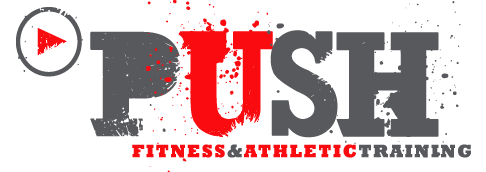Brachial Neuritis: Shoulder, Arm, Hand Pain, and Chiropractic Intervention
Table of Contents
Medical History and Examination
The process of diagnosing brachial neuritis involves an individual’s medical history and physical exam. Cases that are more complicated could require imaging studies and electrodiagnostic tests. The first steps in diagnosing the cause of shoulder and/or arm pain include:Medical history
Information will be collected on an individual’s:- Medical history
- Family history
- Underlying conditions
- Recent illnesses or injuries
- Lifestyle habits
- How and when symptoms began
- Current symptoms
Physical examination
A chiropractor will palpate or inspect by feeling the neck, shoulder, and arm for irregularities. Then they will examine the range of motion, strength, and reflexes. If the individual’s history and physical exam suggest that the cause could be brachial neuritis or other condition that involves the nerves, then imaging studies, and diagnostic tests could be required to evaluate further.Symptoms of Brachial Neuritis
The condition is also known as Parsonage-Turner Syndrome. It affects the brachial plexus, which is a set of nerves that run from the neck and upper back to the shoulders. The condition usually affects only one side of the body and presents randomly. What happens is the nerves become inflamed.- Inflammation can be triggered through an autoimmune response. This is often the result of an infection, surgical procedure, or other internal stressors. The inflammation can lead to severe debilitating shoulder pain over a few days.
- This also leads to long-term numbness, weakness in the shoulder, and arm.
- The pain becomes worse with movement.
- Typically, the pain goes away on its own within a few days.
- Numbness, weakness, or tingling in the shoulder or arm continues.
- Over time the symptoms begin to worsen and if left untreated could lead to muscular atrophy of the arm.
- The pain and weakness can make it difficult to move the arm at all, which leads to decreased strength.
- Symptoms can last up to a year or more.
Chiropractic Relief
Treatment requires a pain management program until the pain subsides. Once the pain is manageable chiropractic, physical therapy, exercises, and stretches could be utilized to improve mobility and strength. Chiropractic can provide relief and tools necessary to prevent the worsening of symptoms. Chiropractic helps to:- Reduces pain
- Improves mobility
- Restores strength
Shoulder Pain Chiropractic Treatment
Dr. Alex Jimenez’s Blog Post Disclaimer
The scope of our information is limited to chiropractic, musculoskeletal, physical medicines, wellness, and sensitive health issues and/or functional medicine articles, topics, and discussions. We use functional health & wellness protocols to treat and support care for injuries or disorders of the musculoskeletal system. Our posts, topics, subjects, and insights cover clinical matters, issues, and topics that relate and support directly or indirectly our clinical scope of practice.* Our office has made a reasonable attempt to provide supportive citations and has identified the relevant research study or studies supporting our posts. We also make copies of supporting research studies available to the board and or the public upon request. We understand that we cover matters that require an additional explanation as to how it may assist in a particular care plan or treatment protocol; therefore, to further discuss the subject matter above, please feel free to ask Dr. Alex Jimenez or contact us at 915-850-0900. The provider(s) Licensed in Texas& New Mexico*References
Feinberg, Joseph H, and Jeffrey Radecki. “Parsonage-turner syndrome.” HSS journal: the musculoskeletal journal of Hospital for Special Surgery vol. 6,2 (2010): 199-205. doi:10.1007/s11420-010-9176-xPost Disclaimer *
Professional Scope of Practice *
The information herein on "Brachial Neuritis: Shoulder, Arm, Hand Pain, and Chiropractic Intervention" is not intended to replace a one-on-one relationship with a qualified health care professional or licensed physician and is not medical advice. We encourage you to make healthcare decisions based on your research and partnership with a qualified healthcare professional.
Blog Information & Scope Discussions
Our information scope is limited to Chiropractic, musculoskeletal, physical medicines, wellness, contributing etiological viscerosomatic disturbances within clinical presentations, associated somatovisceral reflex clinical dynamics, subluxation complexes, sensitive health issues, and/or functional medicine articles, topics, and discussions.
We provide and present clinical collaboration with specialists from various disciplines. Each specialist is governed by their professional scope of practice and their jurisdiction of licensure. We use functional health & wellness protocols to treat and support care for the injuries or disorders of the musculoskeletal system.
Our videos, posts, topics, subjects, and insights cover clinical matters, issues, and topics that relate to and directly or indirectly support our clinical scope of practice.*
Our office has reasonably attempted to provide supportive citations and has identified the relevant research study or studies supporting our posts. We provide copies of supporting research studies available to regulatory boards and the public upon request.
We understand that we cover matters that require an additional explanation of how it may assist in a particular care plan or treatment protocol; therefore, to further discuss the subject matter above, please feel free to ask Dr. Alex Jimenez, DC, or contact us at 915-850-0900.
We are here to help you and your family.
Blessings
Dr. Alex Jimenez DC, MSACP, RN*, CCST, IFMCP*, CIFM*, ATN*
email: coach@elpasofunctionalmedicine.com
Licensed as a Doctor of Chiropractic (DC) in Texas & New Mexico*
Texas DC License # TX5807, New Mexico DC License # NM-DC2182
Licensed as a Registered Nurse (RN*) in Florida
Florida License RN License # RN9617241 (Control No. 3558029)
Compact Status: Multi-State License: Authorized to Practice in 40 States*
Presently Matriculated: ICHS: MSN* FNP (Family Nurse Practitioner Program)
Dr. Alex Jimenez DC, MSACP, RN* CIFM*, IFMCP*, ATN*, CCST
My Digital Business Card




